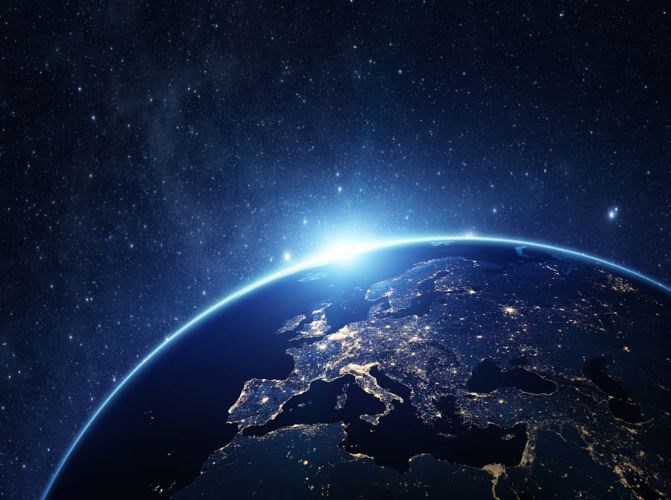On Sept. 12, 1962, at Rice University, U.S. President John F. Kennedy committed the United States to putting "a man on the moon" before the end of the decade, not because it was easy but because it was hard.
Although his speech included other objectives, the event is generally known as the "We choose to go to the Moon" speech and NASA realized Kennedy's vision on July 20, 1969, as a human being landed on another celestial body for the first time.
With "one small step for man, one giant leap for mankind," the space age arrived in earnest.
Human exploration of the moon was short-lived, though, and we haven't been back for a very long time.
This year marks the 50th anniversary of the first landing. We haven't been back since Dec. 14, 1972.
Space exploration continues, though, but now we are visiting other planets and celestial bodies using space probes and robotic agents. Mars has three active robots on its surface sending back details on the Red Planet.
We now know Mars has liquid water. Its surface in the past was shaped by outbursts of flowing water and may have once been covered with seas. The latest mission is attempting to answer the question of whether or not life might have existed there.
We know Venus is a hothouse hell. Carbon dioxide levels in the atmosphere combined with sulphuric acid make landing on the surface a very short event. Exploration from orbit has indicated there might actually be rivers of molten lead flowing across the surface.
Thanks to Messenger, which explored Mercury, we now have an understanding of the geology of the innermost planet.
And the grand-daddy of space probes, Voyager 1, has left the solar system entirely, but not before provided detailed close-up pictures of the outer planets.
Yet, we still have a lot to learn.
New Horizons flew by Pluto in July 2015. The images it provided of the surface show a planet very different from expectations.
Plains, ridges, mountains and a surface with large tracks of red compounds were among the surprises. A total of five moons were photographed.
Much of the data is still being explored and will likely yield astonishing results over the next few years.
But New Horizons was built to carry on exploring beyond Pluto. On Jan. 1, a billion miles beyond Pluto, the spacecraft will encounter a Kuiper Belt object officially designated 2014 MU69 but unofficially designated Ultima Thule.
Discovered a few years ago, it is a dwarf planet like Pluto. It represents exploration of a celestial body beyond the solar system as we have known it.
The New Horizons team has been watching the approaching planetoid with the Long Range Reconnaissance Imager looking for any possible potential hazards which might require diversions or alterations in the flyby. So far the flight path looks clear but at this point, little can be done to correct the course.
It literally takes hours for signals to reach Earth from the space probe and more hours for any sort of command to return. It is a bit like driving blindfolded when you can only make decisions after the drive is over.
The approach to Ultima Thule will be the most distant flyby NASA has attempted but the scientists involved are hoping the information gleaned will help to unravel the origins of the solar system. The objects orbiting in the Kuiper's Belt are believed to be remnants from the construction of the solar system.
At the same time, Voyager 2 has left the solar system entirely. It is the second time a human-made object has exited the heliosphere - the protective bubble of particles and fields generated by the Sun's magnetosphere and solar wind (the first was Voyager 1).
Voyager 2 is still functional, providing valuable data. It was originally intended to have a five-year mission, but has been in space for 41 years, running off the heat from a nuclear reactor.
It has visited four planets on its 30 billion kilometre trip and far exceeded expectations.
Onboard is an instrument labeled the Plasma Science Experiment which monitors the outflow of particles in the solar wind.
The same instrument in Voyager 1 unfortunately stopped working before it reached the heliopause but Voyager 2 has been able to provide details of the rapid decline in plasma as detected by the speed, density, temperature, pressure, and flux of the wind.
Over the past few months, the solar wind has gradually dropped to zero and Voyager has left the solar system behind.
It will be another 300 years - travelling over 400 million kilometres per year - before it finally reaches the Oort Cloud which is the next major step in its voyage into deep space but, for now, it is one of only two objects we have sent into a universe we are just beginning to explore.



